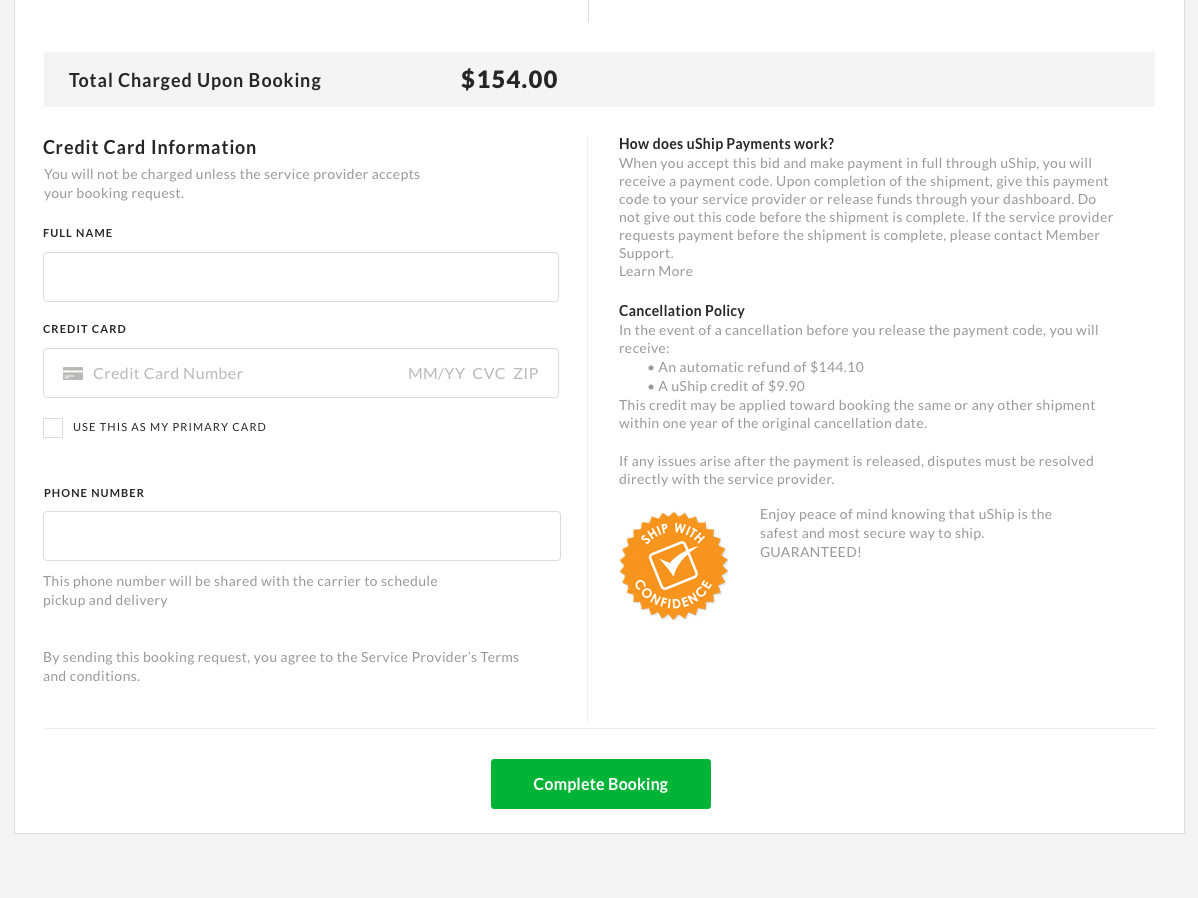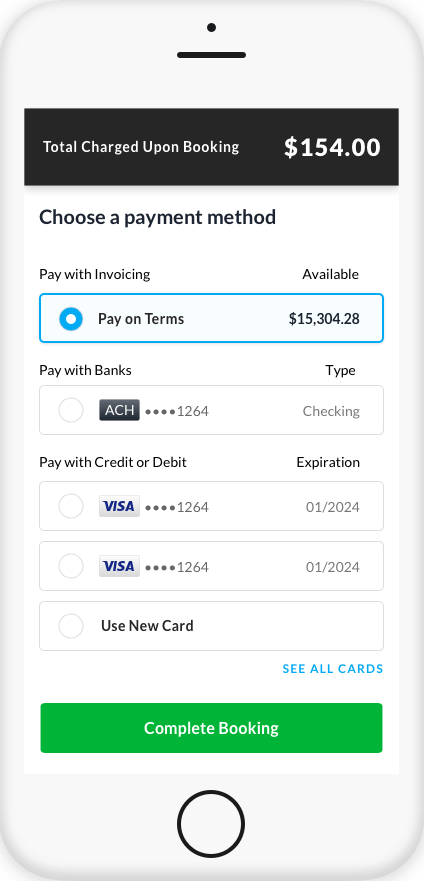
uShip Credit Payment Methods Redesigned
April 8, 2020 / Redesign
uShip Credit Payment Methods Redesigned
Background
Business shippers are high-volume shippers who would do up to 100 shipments a month. Our current checkout procedure was geared towards the less-frequent shipper, who was willing to enter in their credit card at the time of checkout.
How could we better serve the business shipper?
Research
I first needed to understand the problems associated with our current checkout page by interviewing key stakeholders in our company.
I discovered these main problems for business shippers:
High-friction
The old checkout experience forced users to enter in their credit card. For our business customers who had a higher volume of transactions, this was a deal breaker. The amount of friction entering in a payment method for up to 100 transactions a month was tedious and cumbersome.
Manual Invoicing
Another problem I discovered was the manual invoicing process. Account managers at uShip would manually keep track of high-volume shippers transaction through Excel, thus creating our own manually invoicing solution. This process was very hands-on, and involved increased risk with more debt we took on. If a shipper was not able to pay for a shipment, then we would eat the costs.
Problem Statement
In summary, the current checkout process has too much friction for our high-volume shippers, and it is not scalable due to all of the manual touch points.
Goals and Objectives
We needed a solution that could be low-friction at checkout.
This checkout experience should also work for non-business shippers.
Even if the shipper has run out of credit, they should still be able to checkout with their own credit card.
This solution should be a one-stop shop for invoicing.
A better credit solution
There was a third-party integrator, MSTS, who could solve all of our problems. We could reduce our risk to 0% since they would pay us no matter what happens. We could also consolidate the dozens of invoices into one single monthly invoice. This third-party credit vendor would take care of credit checks, determining the credit amount, and they would send us a check every two weeks for the amount of sales we generated through invoicing.
Ideation
By using the Jobs-to-be-done framework, I created several Job Stories as a guide:
-
- When I am on the checkout page, I need to be able to select the credit option, so that I can quickly complete the booking without entering in my credit card info.
- When I am on the checkout page, I need to see how much credit I have left, so that I can determine if I am within my credit limit.
- When I am on the checkout page, I need to choose an alternate payment method if my credit has been exceeded so that I can quickly ship my product to the customer.
Designs
Due to tight timeframes, I created hi-fidelity designs instead of lo-fidelity wireframes.
New payment method designs
Full Page
Mobile Designs
Business Impact
By implementing these new designs, we position ourselves to increase sales, reduce defaulting risk, and streamline invoicing for our business shippers. We addressed our goals, and successfully completed the objectives:
We now had a low-friction experience at checkout that worked for business and regular shippers.
Even if the shipper has run out of credit, they should still checkout with their own credit card.
With our partner MSTS, we now had a one-stop shop for our crediting needs.









